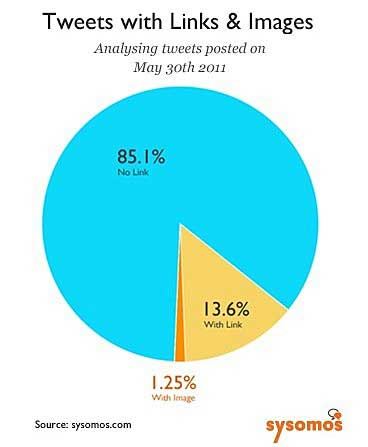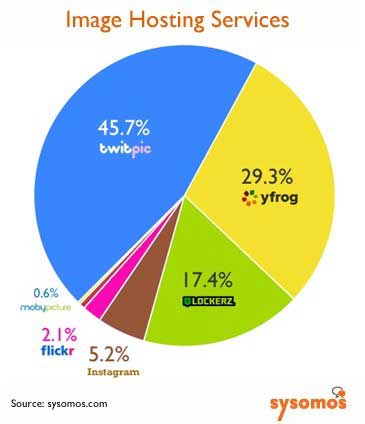Twitter's recent announcement to launch its own photo- and video-sharing service may impact the role of established, third-party, image-hosting services that now enable some 2.1 million tweets linked to images each day, according to a study by Sysomos.
On May 30, 2011, 14.9% of all tweets registered contained a Web link and 1.25% of all tweets contained an image link via a third-party photo-sharing service.

With Twitter generating roughly 170 million tweets daily, according to Sysomos, that translates to 2.125 million tweets each day that link to pictures via third-party services.
Twitter's new initiative, however, will allow users to upload and attach images directly to their tweets via Twitter.com, without having to migrate to third-party image-hosting services.
Who currently dominates that market?
The most popular third-party photo-sharing service is Twitpic, which accounted for nearly one-half (45.7%) of tweets linked to images on May 30, followed by Yfrog (29.3%), Lockerz (formerly Plixi) (17.4%), and Instagram (5.2%).

Looking for real, hard data that can help you match social media tools and tactics to your marketing goals? The State of Social Media Marketing, a 240-page original research report from MarketingProfs, gives you the inside scoop on how 5,140 marketing pros are using social media to create winning campaigns, measure ROI, and reach audiences in new and exciting ways.
Twitter's New Search Experience
Twitter is also launching a new initiative designed to personalize the search experience and help users find the most relevant Tweets, images, and videos. The new functionality—a result of a ground-up rewrite of Twitter's search infrastructure—will also surface photos and videos on the right side of the results page.
In its announcement on May 31 describing the engineering behind the search initiative, Twitter cited the following stats, as of April 2011:
- Twitter serves up roughly 18,000 queries per second—1.6 billion queries a day.
- Twitter indexes on average 2,200 new tweets every second. But during large events such as the recent tsunami in Japan, that rate can increase by a factor of 3 to 4.



